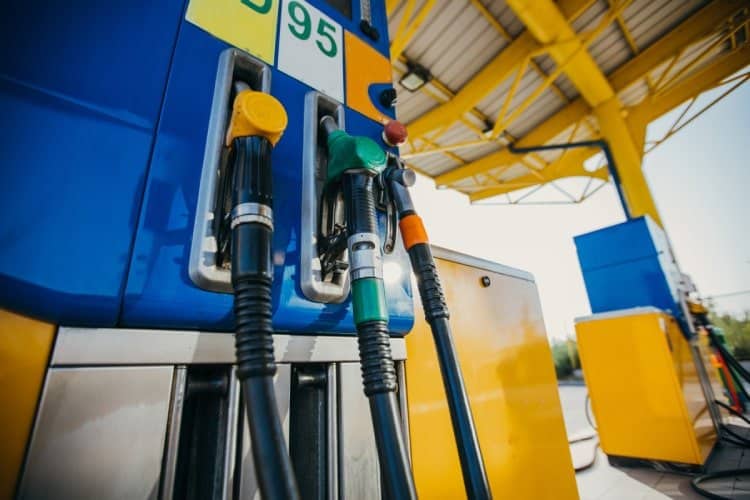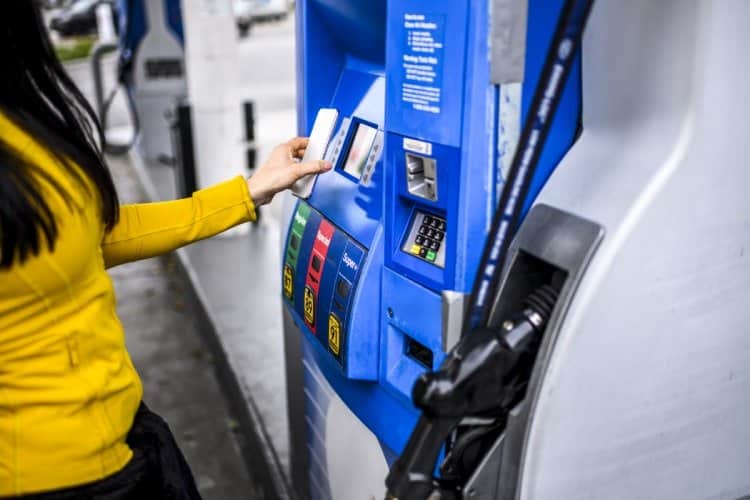Since wholesale fuel prices continue to fluctuate dramatically, and margins on fuel sales are already extremely low, this price-driven customer behavior presents real challenges for gas station operators.
To counter this, fuel and convenience merchants need to drive customer loyalty and increase in-store sales of higher margin items. This means competing on more than just price – and enticing customers to visit them for more than just fuel.
Despite the need to boost loyalty, only 11 percent of U.S. adults belong to a convenience store loyalty program – far below membership in adjacent segments such as grocery stores. This means there is a strong opportunity for fuel and convenience stores to develop initiatives, including mobile apps and loyalty programs, to power better, more personalized customer experiences. This will help keep customers coming back – and improve profitability.
Switching up the forecourt experience
Across the board, consumers are increasingly demanding easier, more frictionless ways to pay. Customers who receive a convenient, friction-free experience tend to spend more and show greater loyalty to a merchant’s brand, so there is definitely a benefit for merchants as well.
While fuel customers are still fairly price-driven, the primacy of price is diminishing and has fallen 12 percent in just four years. It stands to reason – just as we see in the general retail sector – that customers are looking for more than just a good price; they also want convenience, speed and personalized service.
In response to these changing customer preferences, a number of large fuel and convenience operators have begun to launch innovative, seamless forecourt and payment services. For example, 7-Eleven is now piloting a fuel loyalty program in selected stores to provide contactless payment options that reduce touch and offer instant savings at the pump. Customers can pay for fuel contact-free through the 7-Eleven app, using mobile payment options or voice commands via Siri.
Fuel giant ExxonMobil has introduced the Exxon Mobil Rewards+ app to provide faster payments and loyalty points, including customized promotions based on data (i.e., location of the customer). They have also enabled U.S. drivers to use Amazon’s Alexa to pay for fuel.
More broadly, we can also recognize that the payments experience is a strong contributor to customer loyalty, and that fuel merchants need to innovate to compete and meet customer expectations. In our recent EMV Readiness Survey, major fuel merchants listed a range of enhancements that they were looking to implement, including contactless payments (85%), mobile payments (70%) and loyalty programs (66%).
Payment tools can fuel customer loyalty
Alternative payment methods, and mobile payments in particular, are on the rise around the world. But this isn’t just about offering customers convenient digital payment options; it’s also about bringing loyalty programs into the fold. In its recent sector report on loyalty, Mercator predicted that the fuel and convenience segment would be a strong growth opportunity for mobile payment apps as a way to integrate payments, loyalty rewards and personalized marketing offers.
Across the industry and as highlighted above, there’s already a range of mobile apps being launched by major fuel merchants that connect rewards and payment capabilities. These apps help create better experiences both in-store and at the pump, supporting broader payment options such as eWallets, QR-code payments and digital redemption of loyalty offers, all in one place.
Advanced payment technologies can help power some of the more digitally enabled experiences, such as voice commerce (vCommerce), curbside pickup services and other frictionless journeys. But they can also support closer integration of loyalty rewards and incentives to make them part of a more personalized experience – whether that experience happens on the forecourt or in-store.
For example, research from NACS shows that consumers are more likely to buy gas during the evening rush than the morning (33% vs. 22%), likely because of morning time pressures. Those most likely to purchase fuel in the morning are consumers ages 35 to 49 (29%), so there could be an opportunity to offer an incentive to these customers on breakfast food or coffee, for instance. These types of personalized rewards and services engender greater customer adoption and repeat business.
Having a single payments platform that connects customer data with payment methods, and works across mobile, fuel pump and in-store payments, can help create consistent experiences and offer a more complete picture of customer profiles. Merchant-owned omni-tokens not only provide better security, but also allow integration with external loyalty programs to make this happen.
The road to customer loyalty
Ultimately, fuel merchants need to build both fuel sales volume and increase sales of higher-margin items. This means they need to attract customers to buy fuel through a more convenient experience, which additionally entices customers to purchase higher-margin items in-store or delivered to the forecourt.
Since there is little to distinguish gas station merchants from a fuel product point of view, there is an opportunity to deliver customer experiences that go beyond the purchase itself and foster better relationships and stronger brand ties.
Building the right customer experience, which combines convenience, innovation and integrated rewards in the payments process, will help build loyalty and profitability for fuel merchants. But, this will require an agile, sophisticated payments platform that can support and power comprehensive, omni-channel journeys and adapt to changing customer expectations.
View the on-demand recording of the PaymentsJournal Webinar How Fuel Merchants Can Use Payment Platforms to Drive Innovation and Profits for further insights from Raymond Pucci of Mercator Advisory Group and Benny Tadele, ACI’s vice president of Merchant Payments.



